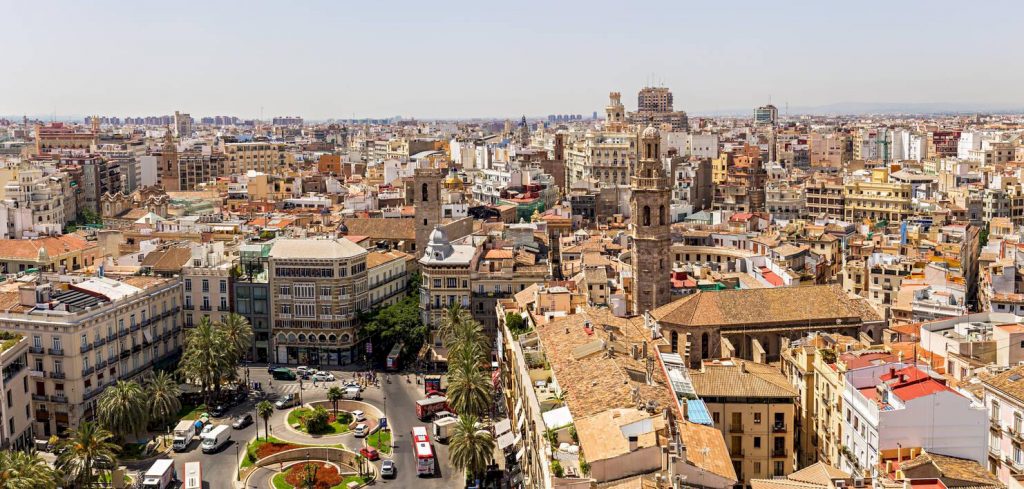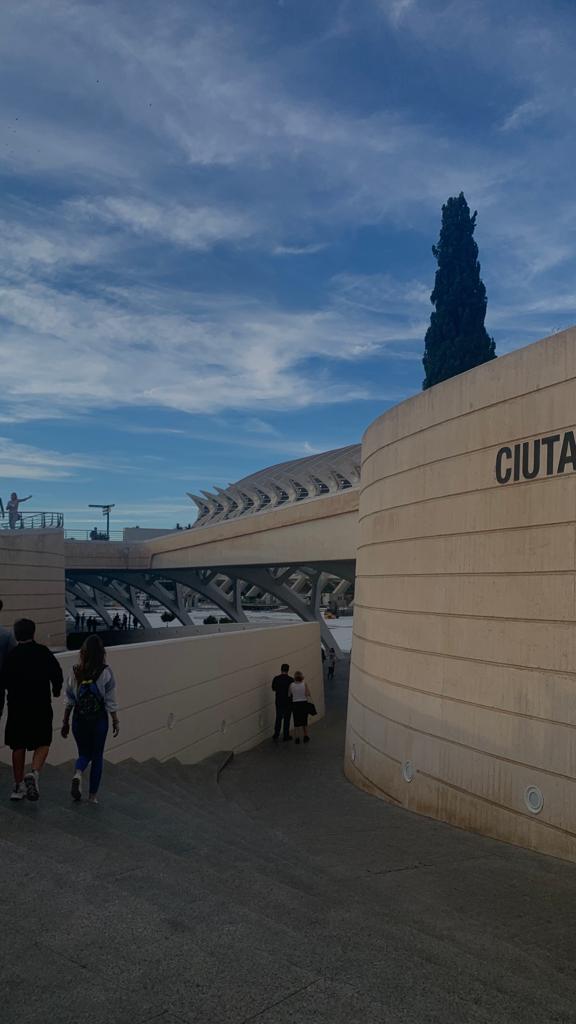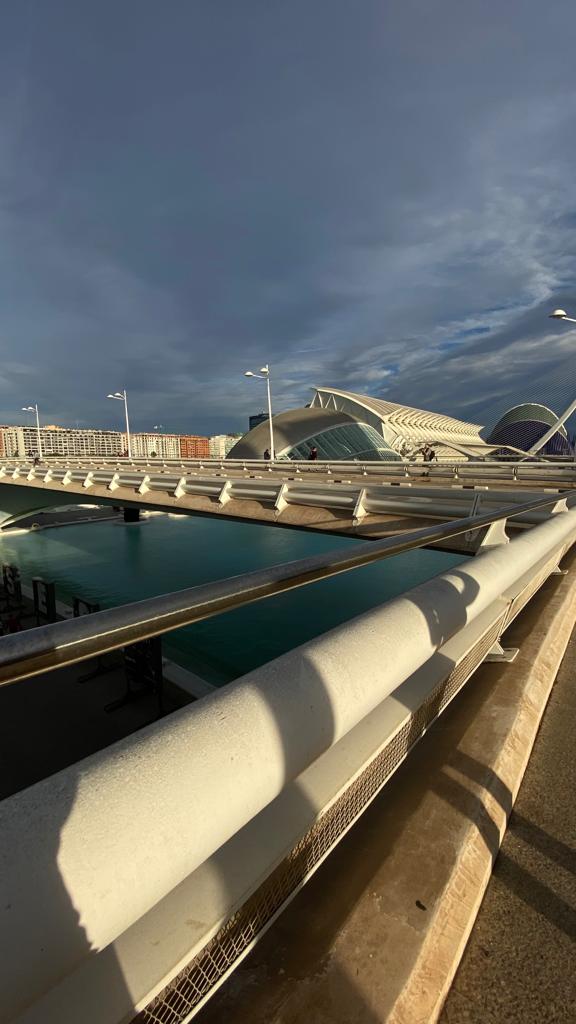Studying in Valencia was probably the best thing that happened to me this year. Valencia is a gorgeous city in all aspects (the people, the food, the architecture…) . It’s a very diverse ity with a great number of culture living together in perfect harmony.
Concerning architecture i’m still disorvering everyday the true beauty of this city. But the two following places are certainly my favourites of Valencia:
CIUDAD DE LAS ARTES Y CIENCIAS
The City of Arts and Sciences in Valencia is a spectacular and imposing space designed by the architect Santiago Calatrava. It is a centre for leisure and culture, with its avant-garde architecture. It is set firmly within the 21st century. At the Hemisfèric one can see the very latest Imax films; there is also a planetarium and an innovative laser show. The Science Museum is located in a spectacular building and offers exhibitions. The Oceanogràfic reproduces all the ecosystems on the planet, with an astounding diversity of flora and fauna. Finally The Palau de les Arts, with its unique oval-shaped design, is the place for seeing the best operas, concerts and stage performances. .
EL CARMEN
El Carmen forms part of Valencia‘s old city. It is therefore a district with historical importance and its age is made apparent by the historical buildings, old churches and its narrow winding streets. It is one of the neighborhoods in the district of Ciutat Vella , which forms the historic center of the city of Valencia . It is an ancient neighborhood, which grew between two walls: the Muslim one ( 11th century ), built by Abd al-Aziz ibn Amir , limited it to the east; and the new Christian wall that protects it to the west.
The current configuration of the neighborhood has its origin in six urban nuclei, which were initially separate but which eventually became integrated into a single neighborhood.
The primitive structure of the neighborhood is located between the streets of Serranos and Caballeros and the Muslim wall, using the diffluent arm of the river as a moat or fence, there are still vestiges of both the moat and the wall. The neighborhood was divided into two sectors: The interior, dedicated to textiles and the exterior constituted by evolution of several suburbs to outside the walls.
– Suburb of Roters: Of Muslim origin, next to the Arab gate Al-Kantara, this suburb was extended to the orchards occupied by the Convent of Carmen, (1283)
– Suburb “dels Tints”, around Corona Street, named after the use of dyers from the Rovella canal.
– La Morería: next to the wall between the current Quart and Corona streets. It was a closed area in which the rest of the Muslim population was forced to live after the conquest.
– La Blanquería, located between the suburb of “Roters” and the river, where tanners , glovemakers, shoemakers, furriers …
– The “Partit”, closed by a wall located on the other side of the convent. Regulated prostitution was practiced which, as a curiosity, would reach fame throughout the Mediterranean.
El Carmen is one of the most beautiful things i’ve seen i remember walking aroud the streets getting lost here and there, taking all kinds of pictures and videos. The architectural compositions are unique and different each one from the other which gives this neighbourhood a very special aspect.








